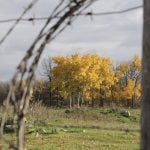
Parasites

Cow patty critters: Understanding dung insects in your pasture
A comprehensive new guidebook provides insight into a valuable ecosystem
Cow patty critters is a guidebook for farmers and ranchers to understand cattle dung insects and their benefits.

Blaming parasites for itchy cattle only scratches surface, study finds
Researchers looked at everything from lice to nutrient deficiencies as they examined hair loss and itchiness in cattle
Dr. Brenda Ralston and her team have been getting to the root of the problem to see what is actually causing itching in cattle.

Managing parasite resistance to livestock dewormers
There’s no easy way to extinguish resistance to dewormers, but producers can manage it and control parasites
The debate is over on whether internal parasites are developing resistance to dewormers in Canadian cow herds, as far as the research is concerned. But while researchers can offer some general principles, ranchers will need to get a little creative to figure out how to manage it on their own operations. Dr. John Gilleard is […] Read more

AUDIO: Managing resistant parasites in your cow herd
Research indicates that internal parasite resistance to some dewormers is likely widespread, but there’s no simple solution. There are, however, approaches that can work, and some that likely won’t. Dr. John Gilleard, professor of parasitology at the University of Calgary, busts some myths about resistant parasites, explains how they evolve to become resistant and what […] Read more

Parasite control in the feedlot
Strategic deworming methods to maximize product efficacy and cattle productivity
If there was a tool available for Canadian cattle feeders to improve both weight gain and disease resistance, what would it be worth to implement? What if that tool was as simple as deworming cattle on arrival? As simple as deworming is, not every feedyard opts to do it. Whether the perception is that feedlot […] Read more

When the worms come marching in
Research on the Record with Reynold Bergen
Gastrointestinal parasites are an unavoidable fact of life. Cattle often consume parasitic worm larvae along with the forage they graze. The larvae take up residence in different parts of the digestive system, develop into adults and lay eggs. The eggs are deposited in the feces, where they hatch and release larvae. These larvae eventually leave […] Read more

Itchy cattle? It may not be lice
Everything from nutritional deficiencies to mites can trigger scratching in cattle
A spike in complaints about its product’s ineffectiveness against itchy cattle drove Solvet, a Canadian veterinary pharmaceutical firm, to investigate the potential causes and to look for relief. “This has become a bigger problem than it used to be,” says Dr. Denis Nagel, a consulting veterinarian with the company, as well as with Alberta Veterinary […] Read more

Managing resistance to internal parasites in cattle
Producers need to tailor parasite control to align with their herds and management systems
Managing internal parasite resistance starts with asking the right questions and understanding the principles of antiparasitic resistance and the range of control products. From there, a producer needs to develop a deworming strategy and pin it to the spring and summer grazing calendar. A veterinarian can help. Antiparasitic resistance is typically defined as the genetic […] Read more

Controlling liver flukes in beef cattle
Parasite often not identified until after an animal dies
A couple of years ago, a beef producer from southeast corner of Manitoba showed me a test tube filled with water. It contained a worm that was about three inches long, one inch wide and flat enough to almost see through. He told me that it was a deer liver fluke that the vet had taken […] Read more



